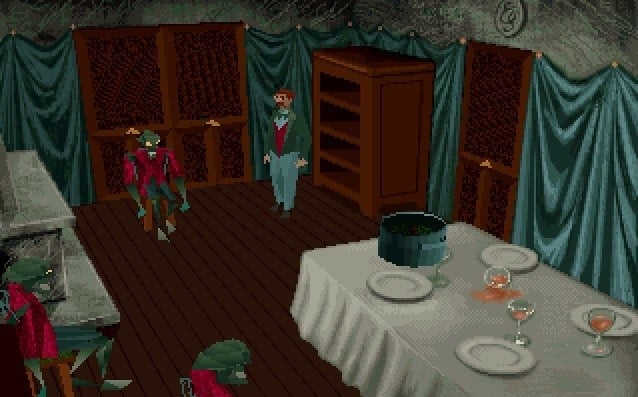The commonly accepted first video game would end up being Atari’s Pong, and its arrival in 1972 would signal the beginning of a medium that now sits right alongside film and television as a multi-billion dollar entertainment industry. Though Pong and other early attempts at games are simple approximations of well-known sports, video games would soon branch out into a plethora of other genres at a rapid pace. The first shoot ’em ups (Space Invaders), puzzlers (Pac-Man), and platformers (Donkey Kong) would all arrive fairly quickly after Pong‘s now-legendary debut, and it wouldn’t take long before developers would make the first and earliest attempts at horror games. Many might assume that the history of survival-horror games dates back to Resident Evil or perhaps Alone in the Dark, but the truth is that the genre came up right alongside the medium since its infancy.
Now, survival-horror games rank as some of the more popular niche genre titles available, with massive multi-million dollar franchises like Resident Evil and Silent Hill paving the way for newer upstarts like the incredibly successful Five Nights at Freddy’s series. Resident Evil itself is now dredging its past successes to both remind players of the genre’s heydey while simultaneously pushing the envelope of what a survival-horror game can and should be. Simultaneously, a brand new generation of developers are looking to the PS1-era classics they grew up on for inspiration in crafting their own unique survival-horror experiences, and it’s arguable that the genre is in the best place now that it’s been in over a decade.
Defining Survival-Horror
In order to discuss the survival-horror genre, its genesis, and its continued evolution, it’s first necessary to define what constitutes a survival-horror game. Sure, there are plenty of games that could fit squarely within the genre of “horror”, but these titles often differ greatly from what many consider to be true survival-horror. While it’s likely that no one will argue against Dead Space being a survival-horror series, trying to label Castlevania as anything more than a horror action-platformer seems like a bit of a stretch. The key component that defines survival-horror is the all-important “survival” moniker, which factors heavily into the commonly accepted elements of the genre. In his excellent analysis on Resident Evil, author Philip J Reed identifies survival-horror games as containing the following characteristics:
- Resource Scarcity: Resources are not plentiful and are hard to come by, and they often lie in inconspicuous places or just out-of-reach. Additionally, obtaining resources may place the player directly in harm’s way.
- Realistic Protagonists: The heroes of survival-horror titles have noticeable physical or mental limitations that make them vulnerable. The player will commonly bump up against these limitations as a way to emphasize the main character being an extension of the player. Further, avoiding combat is just as viable a strategy as engaging in it.
- Slow and Methodical Pacing: Survival-horror games move along at an intentional pace, with players needing to carefully and gradually make their way through the interactive spaces room-by-room. To help stall player progress, most survival-horror games implement puzzles as a major gameplay component.
- Powerful Enemies: Even regular rank-and-file foes in survival-horror games should pose a significant threat to the player. There are fewer of them, but each encounter requires careful engagement and strategy (as well as allocation of precious resources).
Origins & Early Attempts: 1980-1990
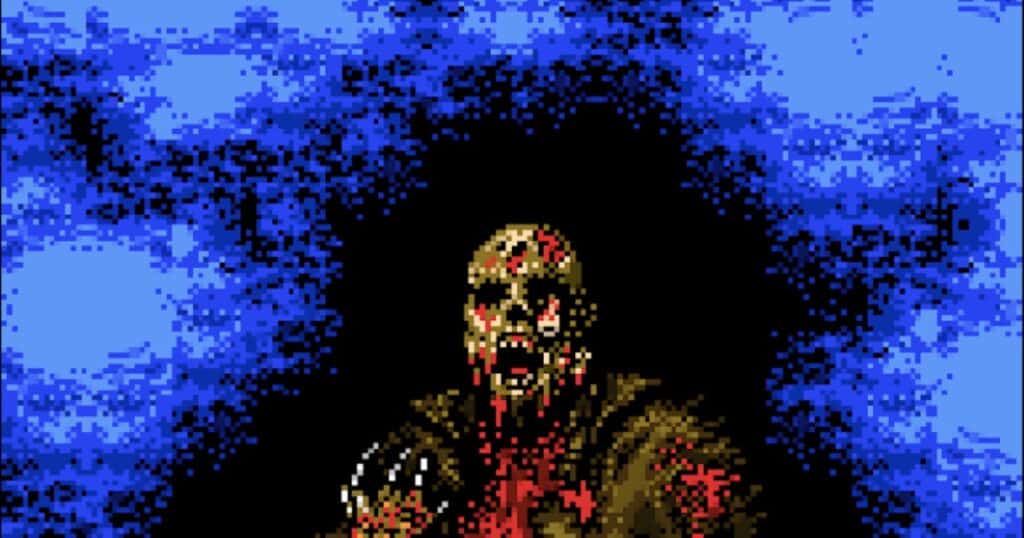
The earliest attempts at what we now know as survival-horror would come courtesy of solo-developer Akira Takiguchi in 1981. Taking inspiration from 1979’s seminal horror classic Alien, Takiguchi (then working as a contractor for Taito) would develop the game AX-2: Uchū Yusōsen Nostromo for the PET 2001 home computer. The title would prove to be popular enough to warrant a port to the PC-6001 home computer and earn a publisher in ASCII. Gameplay in the title stands as some of the earliest examples of survival-horror, with the player stealthily navigating the titular Nostromo spaceship while avoiding being spotted by an alien. The alien remains invisible until it spots the player, at which point it reveals itself and forces fight-or-flight response. As in furute survival-horror games, resources are scarce and players can accidentally soft-lock themselves behind certain encounters.
A year later in 1982, Atari would release Haunted House for the Atari 2600, which is yet another foundational game in the survival-horror genre. All the major elements of what players find in modern survival-horror games are on full display in Haunted House (albeit in a rudimentary form), such as emphasis on puzzle solving, inventory management, limitations on resources, and gated progression based on finding key items. Following these earliest examples, several other publishers would begin producing horror games to varying degrees of success, with many of these titles (Splatterhouse, Castlevania) erring on the side of pure horror rather than survival-horror. It wouldn’t be until 1989 that the genre would see its next major influence.
Sweet Home
Basing its story and characters on the Japanese horror film of the same name, Capcom’s Sweet Home is arguably the first modern survival-horror game thanks to how much of its influence is felt in the title that coined the term: Resident Evil. Created by Tokuro Fujiwara (who had previously worked on Ghosts n’ Goblins and would go on to create Resident Evil), Sweet Home features a group of protagonists trapped in a deadly mansion that must solve puzzles and fight enemies using finite resources and managing a limited inventory. Additionally, incorrect solutions to puzzles can result in the death of the player and much of the game’s story is communicated through in-game documents and lore. The game’s imagery and violence prevented it from releasing in the West, but its spiritual successor would end up being a massive cultural phenomenon that also helped to name the genre.
Defining the Template: 1992-1996
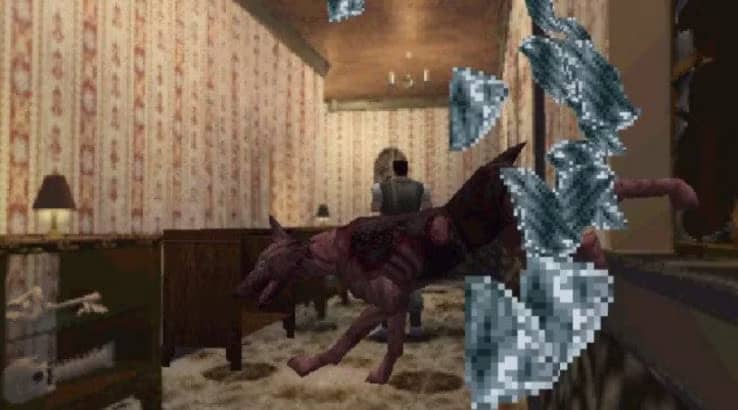
Three years after Sweet Home‘s release and 4 years prior to the release of Resident Evil, Frédérick Raynal’s Alone in the Dark would establish the template on which Capcom’s survival-horror empire is built. Released for MS-DOS computers by Infogrames in 1992, Alone in the Dark tells the tale of two protagonists (Edward Carnby and Emily Hartwood) who are investigating the haunted Derceto mansion. The game’s use of Lvoecraftian imagery and atmosphere, as well as its emphasis on cinematic camera angles and inspiration from the films of George Romero and Dario Argento, would set it apart from all other horror games that came before it. Alone in the Dark was something of a revelaton for its time, and its influence on Resident Evil is painfully obvious, but it would ultimately lack the polish and mechanics that Capcom’s survival-horror masterpiece brought to the table.
Originally conceived as a remake and spiritual successor to Sweet Home, Capcom would begin development on Resident Evil (or, in Japan, Biohazard) in 1994. Perhaps the biggest inspiration from Alone in the Dark is the game’s use of a fixed camera, which presents each of Resident Evil‘s environments as a shot in a film where the player gets to control the protagonist. Not only does Resident Evil coin the term “survival-horror”, its 1996 release would immediately skyrocket the genre into popularity, resulting in a slew of copycats and imitators, as well as some genuinely great genre contemporaries. Regardless, all of the key elements of a survival-horror title are on full display in Resident Evil, and its template would define the genre moving forward (regardless of its main inspiration, Alone in the Dark, arriving first).
Survival-Horror’s Heyday: 1996-2005
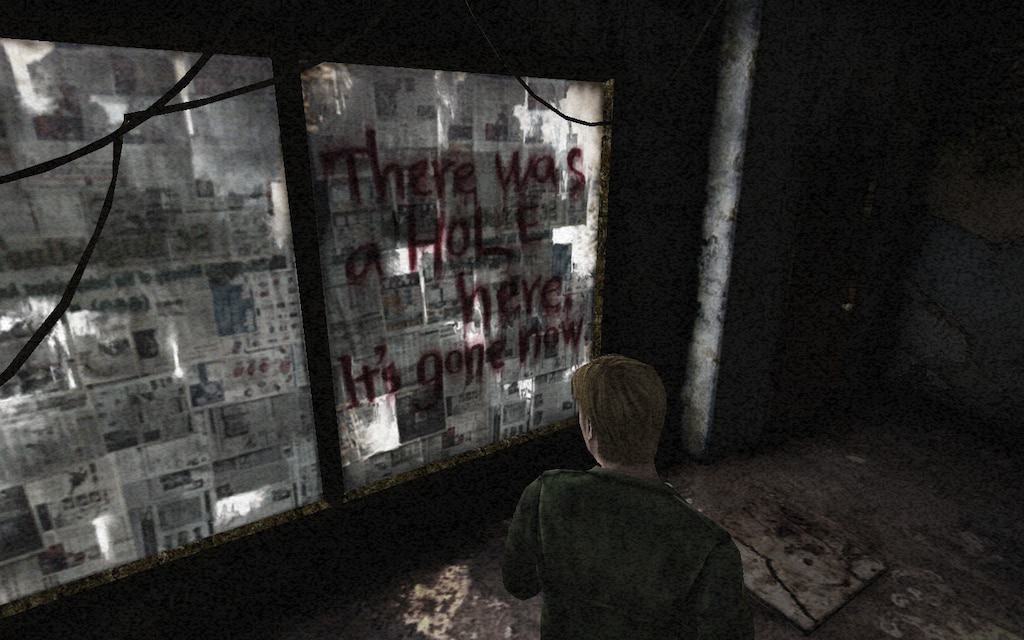
The arrival of the Sony PlayStation and Sega Saturn (along with the shift in 5th generation consoles from cartridges to CD-ROMs) would signal a massive paradigm shift in how video game stories could be told, and the increasingly cinematic nature of the era’s video games would provide fertile ground for the survival-horror genre to flourish. Not long after Resident Evil‘s release and massive success, other developers would try their hand at replicating Capcom’s survival-horror template with their own titles, albeit with a unique spin on the horror subgenres and tropes they adhere to. One of the earliest examples are the Clock Tower titles, which have the player assuming control of a mostly-powerless protagonist that must flee and hide from an unkillable pursuer rather than fight.
Perhaps the most important survival-horror contemporary of the era is Konami’s Silent Hill, whose arrival in 1999 would come hot on the heels of Resident Evil‘s two excellent PlayStation-era sequels. Silent Hill immediately separated itself from Capcom’s survival-horror juggernaut by placing a greater emphasis on psychological horror and existential dread rather than campy B-movie action-horror, and its use of full-3D environments instead of pre-rendered backgrounds showcased how far both 3D games and the genre had come in just a few short years.
Arguably the most important game to release in the heyday of the survival-horror genre would be Capcom’s magnum opus on the GameCube, Resident Evil 4. Resident Evil 4‘s widely publicized false starts and reimaginings during its development would result in the game arriving as a complete redefinition of both the Resident Evil franchise and the survival-horror genre as a whole.
Reinventing the Genre: 2006-2016
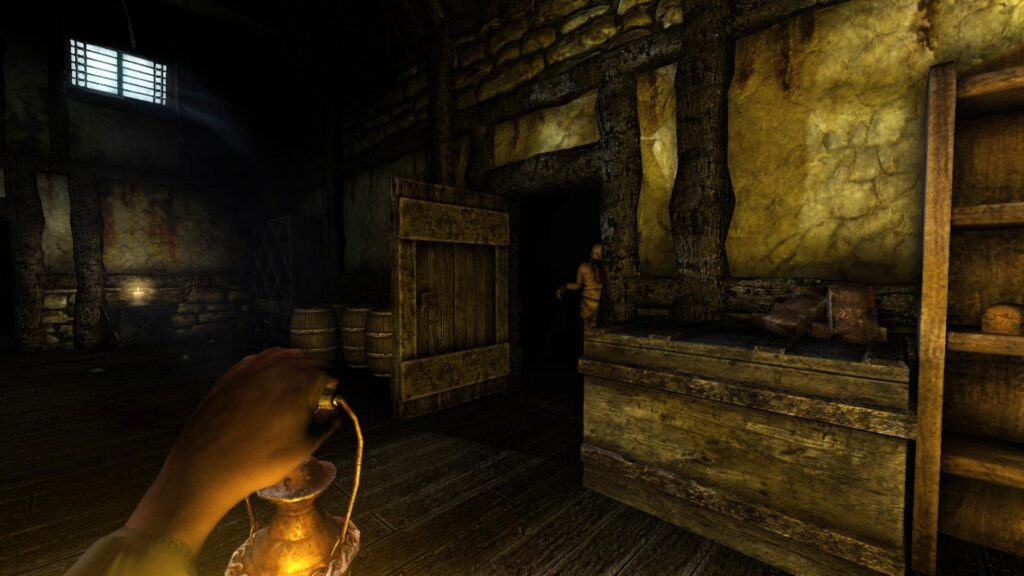
Just like how Resident Evil had influenced a legion of competitors a decade prior, Resident Evil 4‘s impact would reach well beyond its own franchise. However, the game’s decidedly sharp turn into action-horror territory would end up having an interesting effect on the direction of survival-horror games moving forward. One of the first games to arrive clearly using Resident Evil 4 as a template is 2008’s Dead Space, which swaps action-horror for sci-fi horror and takes more influence from Event Horizon and Alien than Dawn of the Dead. Concurrent to the rise of the Dead Space franchise, Resident Evil would continue to venture further and further down an action-oriented path, resulting in the franchise somewhat losing its way.
With both Resident Evil and Silent Hill moving further away from the characteristics that made them household names to begin with, a new generation of developers started to step up and create their own unique spin on the survival-horror genre. Games like Outlast and Amnesia would switch perspective to first-person and force the player to hide and flee rather than combat enemies outright, and that potent mix of powerlessness, tension, and horror in those games would in-turn influence several other titles. One of the most significant of these is Five Nights at Freddy’s, which uses jump-scares and found footage to great effect, becoming one of the few horror IPs that can compete with Resident Evil‘s success.
However, not to be outdone by the games it inspired, the Resident Evil franchise would be far from done reinventing itself. The end of 2016 would see Capcom release the “Beginning Hour” demo for Resident Evil 7, and it was quickly apparent just how different the next mainline game would be and how much inspiration it was pulling from survival-horror’s new breed.
What’s Old is New Again: 2017-Present
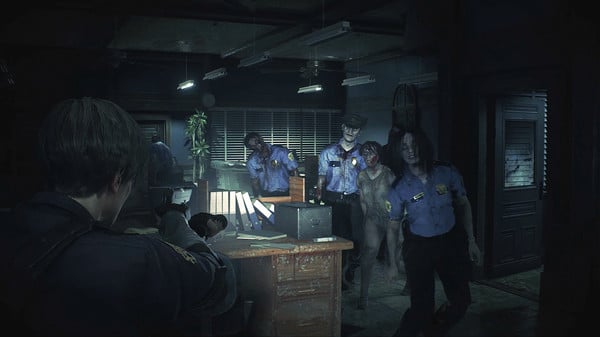
Resident Evil 7: Biohazard would end up being the exact kind of “shot-in-the-arm” that the series sorely needed. Between its use of a first-person perspective (a first for the series) and swapping of influences from Dawn of the Dead to The Texas Chainsaw Massacre, Resident Evil 7 acts as the first step on a bold new path for the franchise. Aside from being an excellent new mainline entry in the series, Resident Evil 7‘s success would pave the way for Capcom to move forward with an ambitious remake of one of the best games in the franchise — Resident Evil 2.
After more than a decade of waiting for a remake of the sequel following the GameCube’s impressive Resident Evil remake, Resident Evil 2‘s arrival in 2019 would start a chain reaction and help define Capcom’s strategy for the franchise moving forward. Remakes of Resident Evil 2 and 3 would give way to a new mainline entry in Resident Evil Village, which in-turn would clear the path for an ambitious remake of Resident Evil 4. All of these remakes are excellent experiences in their own right that stand apart from the originals, but their consistency of tone and definitive horror-leanings are continuing to support the modern day Resident Evil renaissance.
And, concurrent with the remakes of classic survival-horror games from the 5th and 6th console generations, indie developers are now looking back to the PS1 era again for inspiration in crafting their own survival-horror titles. Games like Signalis, Crow Country, World of Horror, and others all use the genre’s forebears as a starting point for their own unique takes. By looking to its past, survival-horror continues to chart a bold path into the future.
The image featured at the top of this post is ©Gameplay screenshot.
